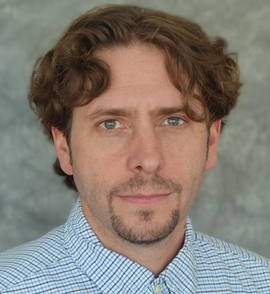Associate Professor
Corneal Gene Therapy
Specialty
Adeno-associated Viral Vectors and DNA Repair
Education
PhD: West Virginia University (2000-2005
Postdoctoral Fellowship
Gene Therapy Center – University of North Carolina (2005-2008)
Areas of Interest
Enhancement of the AAV gene therapy vectors for: i) large gene therapy, ii) human gene editing and iii) stem cell transduction.
Research Goals
The DNA packaging capacity of the Adeno-Associated Vectors (AAV) is relatively small, currently rendering it deficient for the treatment of diseases requiring large gene transfer (>4.7kb). To overcome this size limitation, we have developed a novel technique (OAGR) and characterized existing approaches that exploit host DNA repair pathways for intracellular large transgene reconstruction. During this work we have identified host DNA repair proteins and pathways necessary for episomal genetic engineering with the understanding that enhancements at the basic science level will aid in the generation of a safer and more efficient clinical reagent. Towards disease therapy, we have evaluated different AAV large gene delivery contexts in disease models of dysferlinopathy and hemophilia A. In addition, we are translating our optimized large gene delivery format for the treatment of macular degeneration.
Our lab has also been focused on emerging technologies using DNA endonucleases to genetically engineer human and mouse chromosomes. These efforts use AAV vectors for gene delivery of both an endonuclease that creates a precise double-strand break that stimulates homologous recombination, and a DNA repair substrate containing the desired modification. Importantly, we have defined the role of duplexed AAV genomes to enhance the targeted repair process and were the first to engineer and validate a universal AAV context which allows the delivery of 2 zinc-finger nucleases, as well as a repair substrate, in a single AAV vector (in collaboration with Dr. M. Porteus). Additionally, we have demonstrated the stimulation of gene editing using FDA approved drugs while providing mechanistic insights into this process. Currently we are characterizing structured DNA elements, implicated in genome instability and cancer, as targets for genetic engineering.
Consistent with my interest in AAV-mediated gene delivery, the DNA damage response, and genetic engineering, we have also focused on the AAV vector transduction of different types of stem cells. Stems cell are known to be intolerant of DNA damage and often prefer apoptotic induction instead of cell cycle arrests. Initial interests in AAV-mediated gene delivery to human embryonic stem cells (hESCs) resulted in an AAV-induced DNA damage response culminating in apoptosis. A tedious evaluation of this phenomenon indicated that a sequence in the inverted terminal repeat of the AAV vector was acting like an uncapped telomere to induce apoptosis during S-phase. Interestingly, investigations since that time demonstrated that adult human cells that are considered multi-potent (hMAPCs), are efficiently and safely transduced by AAV vectors. The collective analyses demonstrate the burgeoning concept of “stemness” and suggests that AAV vector transduction may be used to distinguish different cell populations based on this attribute.
Research Publications:
Click here for a listing of Dr. Hirsch’s research publications.

